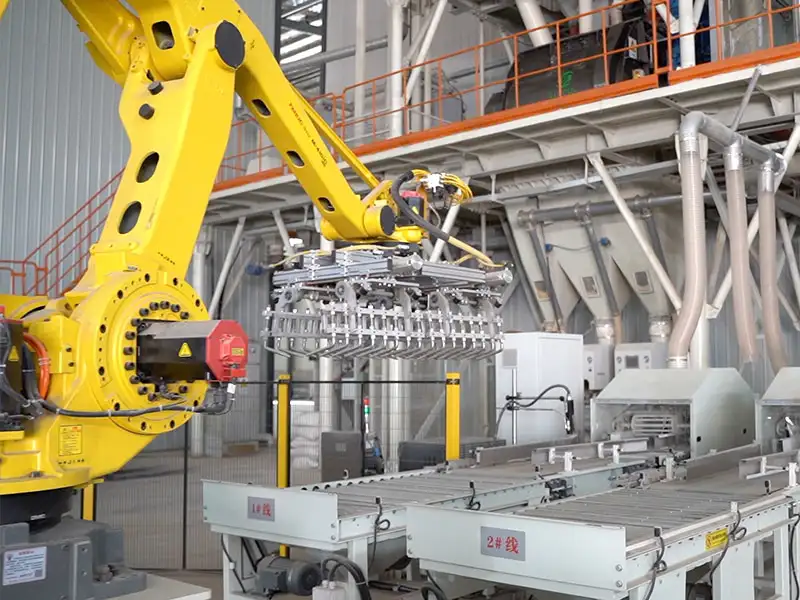Analysis of Illegal Cost Reduction Phenomena in the Dry-Mix Mortar Industry: Hazards and Warnings
In the dry-mix mortar industry, some merchants adopt various illegal means to cut costs and pursue short-term interests. These practices not only violate national standards such as Premixed Mortar (GB/T 25181) but also pose serious threats to project quality and safety. Their typical illegal behaviors and hazards deserve vigilance.
Jul 19,2025

In the dry-mix mortar industry, some merchants adopt various illegal means to cut costs and pursue short-term interests. These practices not only violate national standards such as Premixed Mortar (GB/T 25181) but also pose serious threats to project quality and safety. Their typical illegal behaviors and hazards deserve vigilance.
I. Raw Material Substitution and Cutting Corners: Sacrificing Core Performance for Cost
Illegal substitution of core raw materials is a key problematic area. Cement, as a crucial guarantee for mortar strength, is largely replaced by inert materials such as stone powder and heavy calcium powder by some merchants, with the substitution ratio often exceeding 30%. For example, the masonry mortar used in a project had insufficient cement content, resulting in a compressive strength of only 60% of the design value. This caused large-scale cracking of the wall in a short period, seriously affecting the structural load-bearing capacity.
The quality of aggregates is also arbitrarily degraded. Some merchants use unwashed river sand with a mud content exceeding 12% (the standard requires a mud content ≤ 5%), leading to an empty drum rate of up to 15% in plastering mortar. The stone powder content in manufactured sand is relaxed to over 20% (the standard ≤ 15%), directly reducing mortar strength and durability.
Violations also exist in the additive link. Cellulose ether, a key component for water retention and thickening, is replaced by starch by over 30% by merchants, causing severe bleeding during mortar construction and sanding of wall surfaces. The omission of redispersible latex powder in tile adhesives leads to insufficient adhesion, making tiled tiles prone to falling off after installation.
II. Irregularities in Production Processes: Simplifying Techniques to Quality Hidden Dangers
Non-standard operations in the production process further exacerbate risks. Some enterprises fail to design mix proportions as required and directly copy other formulas, resulting in severe fluctuations in the strength of floor mortar due to unreasonable sand gradation, with a rework rate of 20%. What's worse, the mixing time of double-shaft paddle mixers is shortened from the standard 2 minutes to 30 seconds, leading to a mortar uniformity of less than 80% and causing delamination and segregation.
Illegal production also occurs from time to time. An enterprise in Xiangtan carried out production without obtaining qualification and had no laboratory to ensure quality. It was eventually investigated and punished due to safety accidents caused by its products. Some manufacturers in Shanghai omitted environmental protection measures, drying yellow sand in the open air and piling up raw materials, causing severe dust pollution and being legally sealed by environmental protection departments.
III. Measurement and Labeling Fraud: Deceiving the Market and Damaging Rights
Measurement violations and labeling fraud have become common tactics. A mortar factory in Lengshuijiang only filled 48kg of products in 50kg packages, with a shortage exceeding twice the allowable limit. An enterprise in Guangxi fabricated factory names and produced counterfeit mortar with a value of 85,000 yuan. Some merchants in Changsha used well-known trademarks without authorization, and their product quality was completely substandard.
Moreover, some enterprises evade quality supervision by skipping factory inspections or falsifying test data through image editing, falsely claiming C20 mortar as C30, which seriously misleads the market.
IV. Supervision and Governance: Multi-Party Collaboration to Build a Quality Defense Line
Currently, regulatory authorities have strengthened source control, requiring enterprises to establish a raw material traceability system and conduct activity and mud content tests on each batch of raw materials. Through dynamic sampling and unannounced inspections, they verify the implementation of mix proportions and the authenticity of test data. Meanwhile, IoT monitoring equipment is promoted to real-time monitor key parameters such as mixing time, with automatic warnings in case of abnormalities.
Standardizing the industry order requires multi-party collaboration: enterprises should adhere to the bottom line of quality, regulatory authorities need to strengthen full-process control, and purchasers should strictly verify product qualifications. Only by jointly resisting inferior products can project safety and healthy industry development be ensured.

